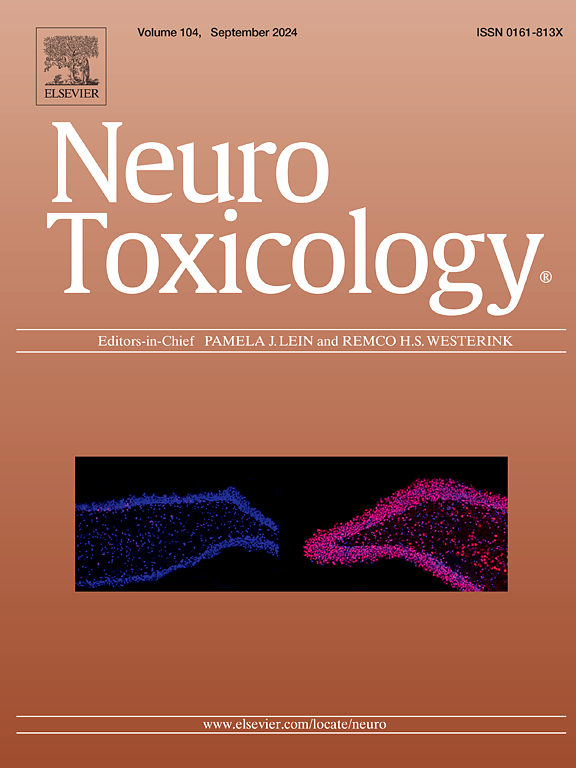The protective effect of Fingolimod upon visual behavior in a demyelination animal model is associated with synaptopathy prevention
IF 3.9
3区 医学
Q2 NEUROSCIENCES
引用次数: 0
Abstract
Multiple sclerosis (MS) is an inflammatory demyelinating disease of the CNS that causes motor, cognitive, and sensory dysfunctions, with visual disorder being one of the most prevalent. Synaptopathy has been recognized as one of the predominant pathogenic components of MS. We previous characterized inhibition of synaptopathy in the visual thalamus using the cuprizone-induced demyelination MS animal model. However, investigations about potential treatments to prevent synaptopathy have received little attention. Fingolimod is one of the most widely used and effective immunomodulators for controlling inflammatory relapses in MS, but few studies in MS animal models have tested its effect on synaptopathy. Given that none of these investigations used the cuprizone-induced demyelination model, our study investigated the preventive effect of Fingolimod on cuprizone-induced synaptopathy. Using Western blotting for synaptophysin, PSD-95, and gephyrin, as well as ultrastructural analysis, we demonstrated that daily intraperitoneal injections of Fingolimod (1 mg/Kg) protect against the increase of inhibitory synapses in cuprizone-treated mice. Fingolimod also prevented reduction of ARC immunolabeling, a sensor of neuronal activity, in cuprizone animals. Finally, through the visual Cliff test, Fingolimod was able to protect cuprizone animals against visual dysfunction. On the other hand, through immunostaining for CNPase, GFAP and IBA-1 we observed that Fingolimod failed to prevent demyelination and glial reactivity in the cuprizone animals. Taken together, the data indicate the potential of preventive treatment with Fingolimod against synaptopathy and visual dysfunction associated with inflammatory demyelination.
芬戈莫德对脱髓鞘动物模型视觉行为的保护作用与突触病的预防有关。
多发性硬化症(MS)是一种中枢神经系统的炎症性脱髓鞘疾病,导致运动、认知和感觉功能障碍,其中视觉障碍是最常见的疾病之一。突触病被认为是多发性硬化症的主要致病因素之一。我们之前使用铜酮诱导的脱髓鞘多发性硬化症动物模型表征了视觉丘脑突触病的抑制作用。然而,关于预防突触病的潜在治疗方法的研究却很少受到关注。芬戈莫德是目前应用最广泛和有效的免疫调节剂之一,用于控制多发性硬化症的炎症复发,但很少有研究在多发性硬化症动物模型中测试其对突触病变的影响。鉴于上述研究均未采用铜酮诱导的脱髓鞘模型,本研究探讨了芬戈莫德对铜酮诱导的突触病变的预防作用。通过Western blot检测synaptophysin、PSD-95和gephyrin,以及超微结构分析,我们证明每天腹腔注射Fingolimod (1mg/Kg)可以防止铜酮处理小鼠抑制性突触的增加。在铜酮动物中,Fingolimod还阻止了ARC免疫标记(神经元活动的一种传感器)的减少。最后,通过视觉Cliff试验,Fingolimod能够保护铜酮动物免受视觉功能障碍。另一方面,通过对CNPase、GFAP和IBA-1的免疫染色,我们观察到芬戈莫德未能阻止铜酮动物的脱髓鞘和胶质反应性。综上所述,这些数据表明芬戈莫德对炎性脱髓鞘相关的突触病和视觉功能障碍的预防性治疗具有潜力。
本文章由计算机程序翻译,如有差异,请以英文原文为准。
求助全文
约1分钟内获得全文
求助全文
来源期刊

Neurotoxicology
医学-毒理学
CiteScore
6.80
自引率
5.90%
发文量
161
审稿时长
70 days
期刊介绍:
NeuroToxicology specializes in publishing the best peer-reviewed original research papers dealing with the effects of toxic substances on the nervous system of humans and experimental animals of all ages. The Journal emphasizes papers dealing with the neurotoxic effects of environmentally significant chemical hazards, manufactured drugs and naturally occurring compounds.
 求助内容:
求助内容: 应助结果提醒方式:
应助结果提醒方式:


